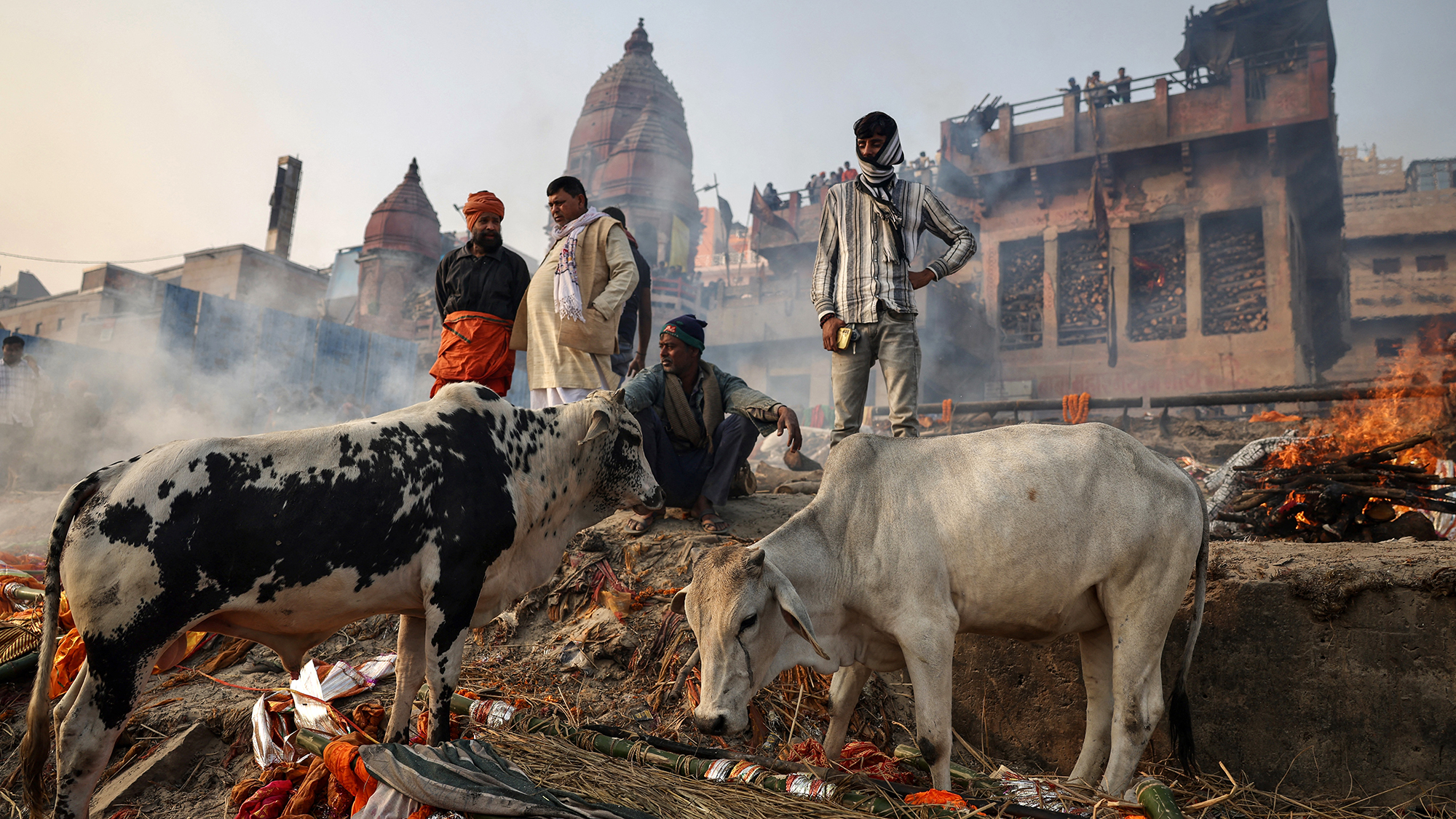Hadaka Matsuri: inside Japan’s naked festival
Little has changed in 500 years - except the addition of hand sanitiser because of coronavirus

Japan’s biggest naked festival – a raucous, 500-year-old religious event in which some 10,000 men strip down to their loincloths and compete to catch twigs in the hope of having a lucky year – took place in Okayama prefecture this weekend.
Despite the eye-catching name, the participants who thronged a temple for the 2020 Hadaka Matsuri were not entirely nude: they wore traditional loincloths called fundoshi and socks known as tabi.
For 30 minutes last night after 10pm, the men jostled each other to touch two eight-inch ceremonial shingi sticks or, failing that, to seize a twig to take home from among 100 bundles.
The Week
Escape your echo chamber. Get the facts behind the news, plus analysis from multiple perspectives.

Sign up for The Week's Free Newsletters
From our morning news briefing to a weekly Good News Newsletter, get the best of The Week delivered directly to your inbox.
From our morning news briefing to a weekly Good News Newsletter, get the best of The Week delivered directly to your inbox.
What does Hadaka Matsuri mean?
The phrase translates as “naked festival”. This weekend’s event in Okayama prefecture takes place every year at the Saidaiji Kannonin Temple 30 minutes from Okayama City. It is the largest annual nude festival in Japan – but not the only one.
Why is everyone ‘naked’?
Mieko Itano of the Okayama tourist board told CNN that the event was originally a clothed one but the competing men found that “their clothes just got in the way”. Being naked gave participants more chance of reaching the coveted tokens, said Itano.
A free daily email with the biggest news stories of the day – and the best features from TheWeek.com
But CNN notes that the Hadaka Matsuri held in Okayama at the weekend is only one of several annual naked events that take place in Japan. The broadcaster does not say whether the others are also held in the nude for reasons of streamlining.
Where do the sticks and twig bundles come from?
These ceremonial objects are thrown into the waiting crowd of semi-naked men by a priest from a window 12 feet above them. For 30 minutes, the men crowd each other in attempts to reach them. Some emerge from the struggle with cuts, bruises or sprained joints, notes CNN.
What is the origin of the festival?
It is thought to have originated some 500 years ago, says The Independent. Originally, the priests threw paper tokens to the crowd but these were found to rip too easily during the event, so were later replaced with wood.
What does the festival mean?
According to The Independent, competitors believe they will enjoy one year of good fortune if they catch a twig. CNN says the event “celebrates the blessings of a bountiful harvest, prosperity and fertility”.
Are there any modern touches?
One or two. Many of the men organise themselves into teams to take part, often based around a workplace – so the festival fulfils the decidedly contemporary role of a team-building exercise for colleagues.
This year’s event also features the very up-to-the-minute addition of hand-sanitiser dispensers specially placed around the entrance to help avoid the spread of the new Covid-19 strain of coronavirus, although Itano said she was recommending that surgical masks should not be worn during the rough and tumble of the competition.
-
 How Bulgaria’s government fell amid mass protests
How Bulgaria’s government fell amid mass protestsThe Explainer The country’s prime minister resigned as part of the fallout
-
 Japan’s Princess Aiko is a national star. Her fans want even more.
Japan’s Princess Aiko is a national star. Her fans want even more.IN THE SPOTLIGHT Fresh off her first solo state visit to Laos, Princess Aiko has become the face of a Japanese royal family facing 21st-century obsolescence
-
 Femicide: Italy’s newest crime
Femicide: Italy’s newest crimeThe Explainer Landmark law to criminalise murder of a woman as an ‘act of hatred’ or ‘subjugation’ but critics say Italy is still deeply patriarchal
-
 Brazil’s Bolsonaro behind bars after appeals run out
Brazil’s Bolsonaro behind bars after appeals run outSpeed Read He will serve 27 years in prison
-
 Americans traveling abroad face renewed criticism in the Trump era
Americans traveling abroad face renewed criticism in the Trump eraThe Explainer Some of Trump’s behavior has Americans being questioned
-
 Nigeria confused by Trump invasion threat
Nigeria confused by Trump invasion threatSpeed Read Trump has claimed the country is persecuting Christians
-
 Sanae Takaichi: Japan’s Iron Lady set to be the country’s first woman prime minister
Sanae Takaichi: Japan’s Iron Lady set to be the country’s first woman prime ministerIn the Spotlight Takaichi is a member of Japan’s conservative, nationalist Liberal Democratic Party
-
 Japan poised to get first woman prime minister
Japan poised to get first woman prime ministerSpeed Read The ruling Liberal Democratic Party elected former Economic Security Minister Sanae Takaichi


